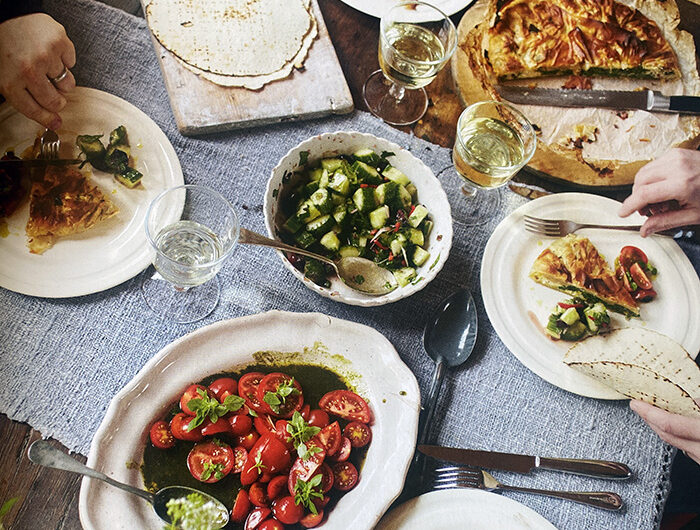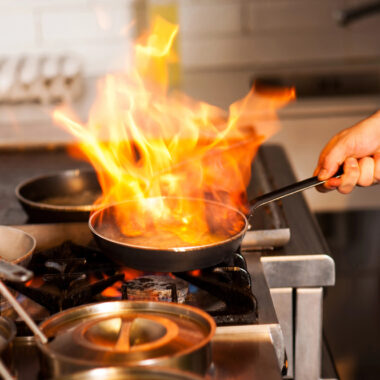We’re doing a series on what we can learn from chefs about cooking. We’ll learn some tips and things they teach that will really help us to build and improve our own cooking. Today, we’re going to be talking about Jamie Oliver, a British chef. He’s a good one for helping a normal mom at home. He doesn’t do so much restaurant cooking; more home cooking, and he does it so well. He and his family, his kids, are all very approachable. He makes lots of comfort food. There might be some things in this episode that are similar to what Gordon Ramsey teaches or does, but that’s good, right? Enforce the best habits. So, here we go.
Number one – you need good ingredients. Once you’ve got good ingredients, keep it fresh and keep it simple. If you can find the food you need at a high quality farmer’s market or grocery store – good quality meat and some delicious vegetables – then you don’t need to have a whole lot of different things. Your meals can be very simple, as simple as just meat and vegetables.
Jamie always stresses the value of using fresh, seasonal ingredients, and of letting the natural flavors come through. Not overcooking, not even over seasoning, but knowing just how to make that vegetable taste its best, and how to cook that meat so that the flavor is enhanced.
With vegetables, steaming really enhances the flavor. I find that roast vegetables can be nice, but often roasting it can kill the vegetables a bit so that they’re not plump. For example, baked Brussels sprouts are usually crispy and a bit burnt. If you like them like that, great. Maybe I haven’t cooked them right, but I really prefer steaming them because the vegetables are so vibrant and tasty after being steamed. Meat goes well with butter and salt in a pan. Basting it and all those things make it taste really good.
Point number two is about preparation – prep like a professional. Get everything ready; chopped and measured. Put out all your ingredients before you start cooking. This helps you to be less stressed, it makes your cooking more fun, and it makes it go smoother and faster. So, try to get everything ready and chopped before you start cooking.
Number three – flavor comes from the basics. We need to learn how to use flavor and understand it. Jamie Oliver is so good at this. He has a little herb garden in his kitchen with all the different herbs. He cuts them right off the plant as he’s cooking and uses them. He’s very good at balancing the flavors. There’ll be herbs, garlic, lemon, lemon zest, chilies, olive oil, butter, salt, pepper, and spices. Obviously, he knows how to use these. Flavor boosters can really enhance your meal and turn something bland into something exciting.
Number four – Jamie Oliver is a big fan of no-fuss cooking, and so his one-pan meals are a lifesaver. He’s a big fan of a one-pot meal or an oven tray meal – roasting or cooking everything together to make it easy. There are also his 30-minute meals where he makes dinner really simple. I think some of those are on YouTube. There’s one with meatballs. I have the recipe book for those 30-minute meals, and I love them because they’re so quick and so interesting. They have all these interesting little twists. If you want something that’s simple for dinner, research one-pan meals, and look out for his 30-minute meals. See if you can try making one of those from the YouTube video about it.
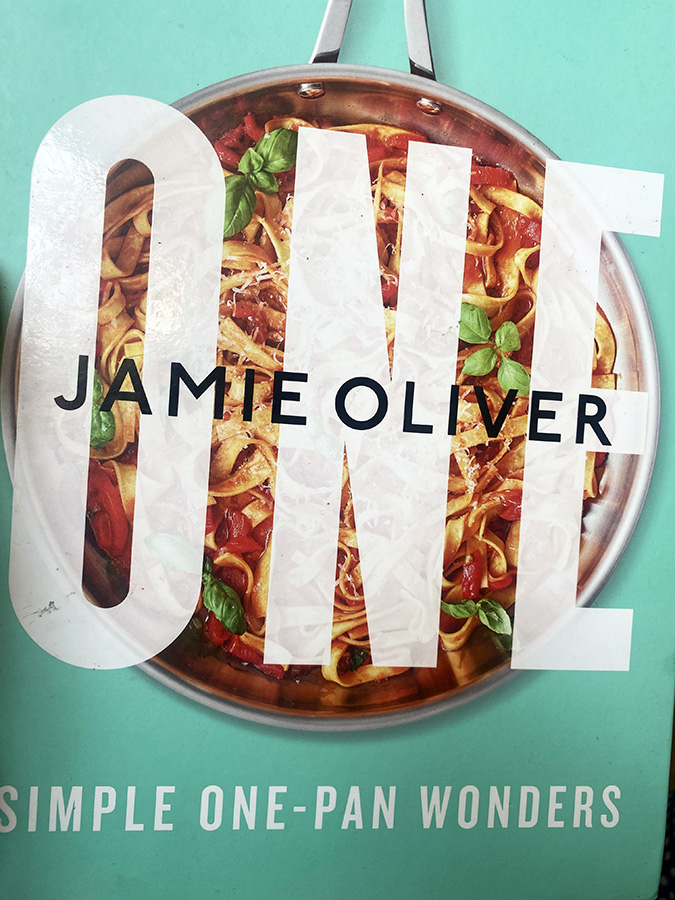
Tip number five, which is similar to a previous one, is that Jamie Oliver likes to use herbs more like a salad, not just a garnish. You really want to enhance the flavor of a dish by adding a lot of fresh herbs. Remember, dried herbs are a lot smaller. They shrink down a lot when they’re dehydrated or dried, so if you’re using fresh herbs, you should use a good amount. Put a whole handful of basil in your bolognese. You can put parsley in fresh chicken soup, and mint can go right in a dish, not just on top. Treat herbs like a real ingredient. Add them to your one pot meals, to your stews, and really enjoy the flavor that they bring.
Number six – taste as you go. Don’t just taste at the end, but enjoy each part as it cooks, and see how it tastes. That helps you to see if all the flavors go together and compliment each other. It also helps you to see if you need salt near the beginning. Adjust your seasoning. Add some acidity like lemon juice or apple cider vinegar if you need, or some zest, as we said earlier. Just enjoy seasoning and tasting.
Number seven – season throughout the process in the same way. Don’t just salt at the end; layer your seasoning, and build depth and balance in your flavor by using different kinds of seasoning. Again, you can use salt, you can use acidity, you can use spices, you can use fresh herbs, you can use tomato puree, and you can use any other things that work. You can add some basil pesto to something. You can add some Parmigiano Reggiano cheese to something like pasta while you’re cooking. Layer the flavors, and don’t wait until the end to season your food.
Number eight, which is also very similar, is to balance your seasoning. Try to use some sour along with the sweet or salty, and use some acidity. Things like lemon juice and vinegar brighten and balance flavors. If you want a light flavor, add a splash of lemon juice. If you want something more intense, add the zest of a lemon, or even of an orange. For example, you can add that to a chicken dish. If you’re going to put chicken in the oven, you can zest some oranges on top of that meat. It brings such a rich flavor.
Number nine – reduce your food waste. Jamie’s passionate about reducing food waste – he’s done a whole campaign about it. Use vegetable peels to make your broth, stale bread to make croutons, leftover herbs in a pesto or a dressing, and leftover pesto in a dish. Use whatever you can, and reallocate it in the next dish you make.
Number ten – cook from fresh, whole ingredients. Jamie’s also had a campaign about this in the schools in Britain. Using fresh foods instead of frozen foods or processed foods is possible in any context if you really work at it. Especially in our homes, we want to make things from scratch without it being too complicated. Fresh, whole ingredients are always going to trump things that have been processed, like packaged pasta or whatever. Without being overwhelmed, try to use fresh ingredients whenever you can.
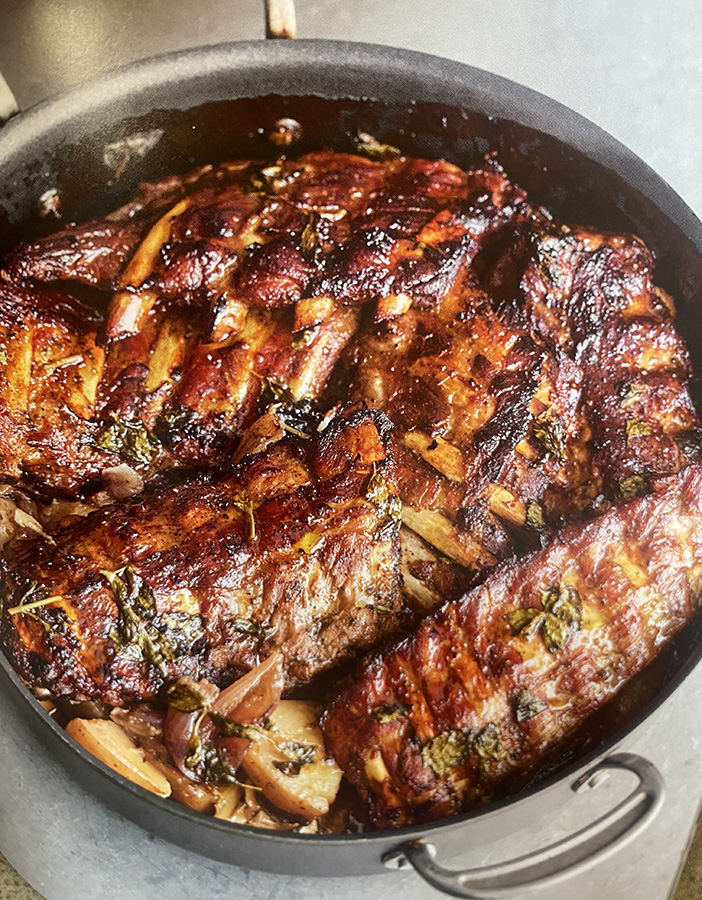
Number eleven – get your kids involved. Jamie promotes cooking as a family. He enjoys cooking with his kids. This is good for teaching kids healthy habits and healthy cooking. Get your kids involved, even if it’s in small ways at the beginning. Let them peel the potatoes, chop the vegetables, or marinade the meat. They can wash up afterwards. They can help stir. They can slice mushrooms. Our 11-year-old likes to slice and cook mushrooms with some supervision. Whatever we’re making, everybody gets involved.
Number twelve – your freezer should be your best friend. It helps you not to waste, and it helps with preparation. Chop your herbs and freeze them in ice cube trays with olive oil for an instant flavor boost. Freeze your leftovers in small portions for quick meals or lunch meals at work. Frozen vegetables are just as nutritious as fresh ones. They work well for soups, stews, and stir fries. Whatever ways you can utilize your freezer to help you are very beneficial.
Number thirteen – Here’s a note about zesting from Jamie Oliver; zest before you juice. He often reminds us of that. Zest adds a vibrant flavor, but you have to do it before you juice the fruit. If you juice it first, the fruit gets flat, and it’s pretty hard to zest effectively. Also, when you zest, don’t zest the white, as that’s bitter, just the colorful yellow or orange part of the skin.
It’s best to use organic fruit for zesting, seeing as you’re eating the actual skin where they would spray the pesticides, et cetera. You can add zest to your dressings, desserts, pastas, marinades, pestos, et cetera. You can even add it when you’re baking a cake. You can bake cupcakes with lemon zest, and it’s amazing in muffins.
Number fourteen – use your hands. Don’t be afraid of using your hands to mix, to season things, or to toss things. It gives you a connection to your food and better control. You can feel what it’s like and what it needs. This is especially helpful when you’re making a salad or marinating your meat. You can rub in the flavor in a very effective way.
Number fifteen is a common tip. I’m sure you’ve heard it before, but it’s very important – let your meat rest after you cook it. After grilling or roasting it, let your meat rest for a few minutes, and then slice it. Don’t do it too soon, or otherwise the juices will leak out, and it’ll be dry and not as flavored. Resting the meat allows it to reabsorb those juices and distribute them throughout, making it tasty and tender.
Lastly, number sixteen – presentation doesn’t have to be fancy, just honest. If it looks like the food is real food made by a real person, then that’s beautiful. Jamie emphasizes natural, rustic presentation over perfection. He’ll often serve the food on a wooden board or a rustic dish with a drizzle of olive oil and a few fresh herbs. He makes family-style platters. That way, there’s less fuss, but it still makes it elegant and special.
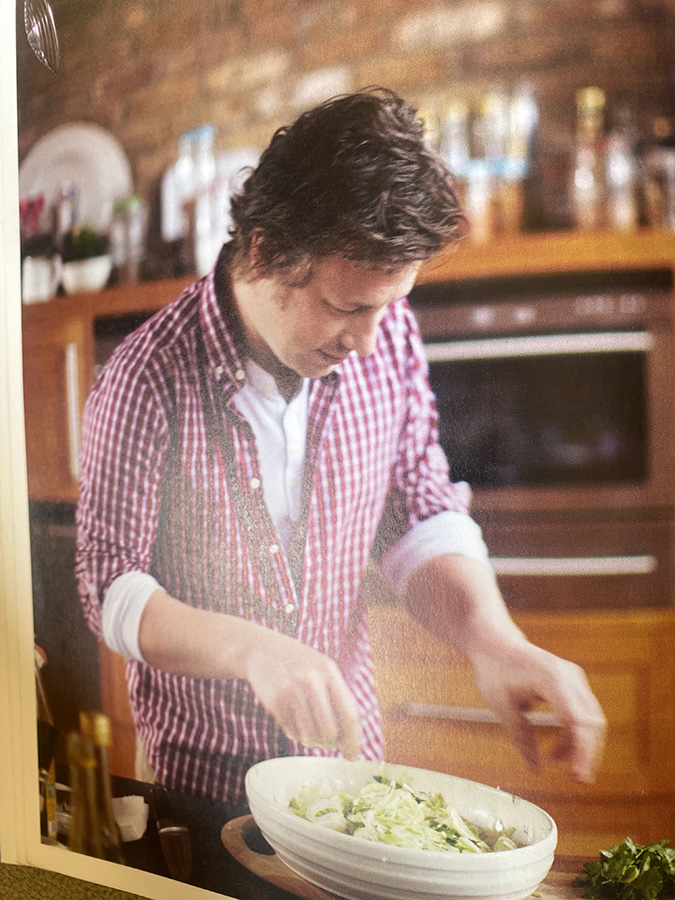
Here are just a few more fun things that Jamie Oliver does that you can do too.
- You can make chili dust. Take your leftover chilies, ginger, and even things like turmeric, and then grate them while they’re frozen. This creates something amazing, what he calls chili dust. It has a powerful flavor. Use that to add heat or zest with no waste.
- There are flavor-packed butter bombs. If you’re doing something like steamed vegetables, elevate it by topping it with softened butter. Mix some lemon zest, chili flakes, and fresh thyme into the butter. The veggies melt it and that delicious flavor is released.
- This one’s a really good idea – make garlic bread crumbs. Instead of just using ordinary bread to make bread crumbs, use garlic bread that’s been toasted with butter. When it’s toasty and crisp, blitz it in your food processor. That makes ready flavored bread crumbs that are amazing to add to pasta bakes like mac and cheese, or casseroles.
- To make crispy roast potatoes, power boil some potatoes in a stock or broth for extra flavor, and then roast them. Then gently squish each one, add some herbs and butter, and put it back in the oven for a moment. That makes them really beyond delicious.
- Jamie also loves to use a pestle and mortar to crush herbs and spices to make things like pesto. This helps to release oils from the herbs in a way that you don’t get when you’re just using a knife. It makes it really homemade and extra delicious.
- These are five essential flavor boosters that he recommends – always olive oil, red wine vinegar, sea salt, black pepper, and a zest, preferably lemon zest.
- I hope these tips were fun, and that you have some new ideas. My goal is always to help us to enjoy cooking more, and to not feel like it’s a chore, but something that we can invest in. It’s almost like an art form when we can slow down and do it in a creative way, knowing that we’re serving our families, and that we’re doing our best, without it being a stress.

